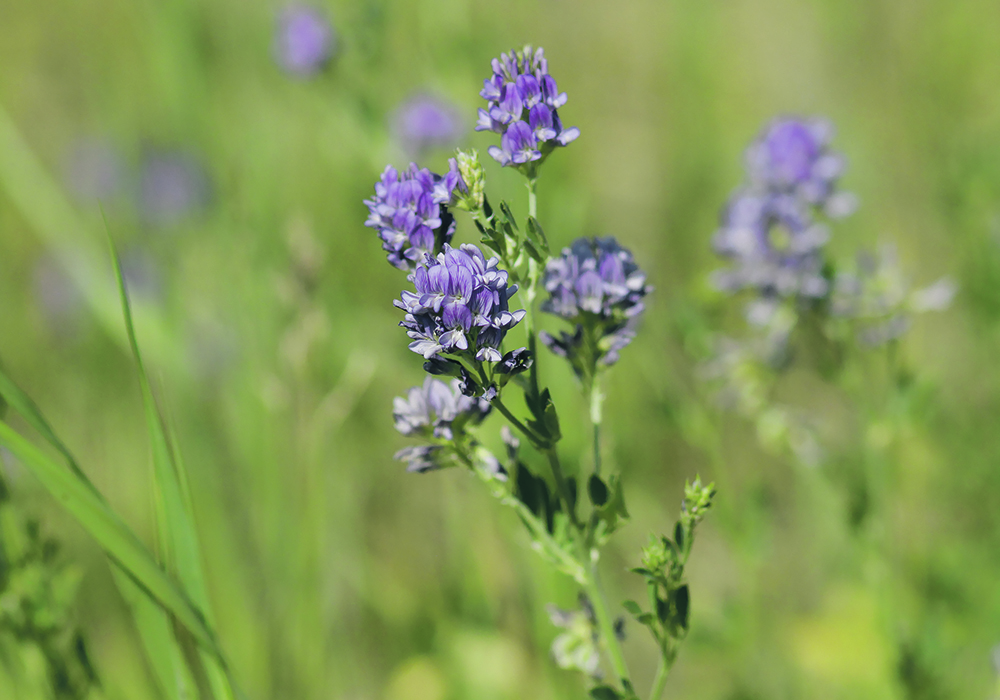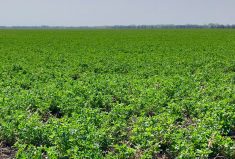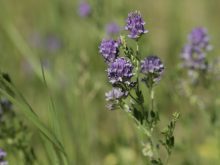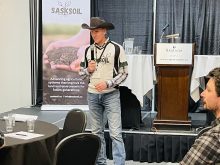Glacier FarmMedia – There are many good reasons to include alfalfa in a grazing stand and one big reason not to: bloat.
That’s a shame, experts say, because appropriate management practices can help farmers reap the legume’s benefits while minimizing problems.
Alfalfa is rich in nutrition and good for the land, but bloat can kill cattle that graze it and many farmers prefer not to take the risk.
Read Also
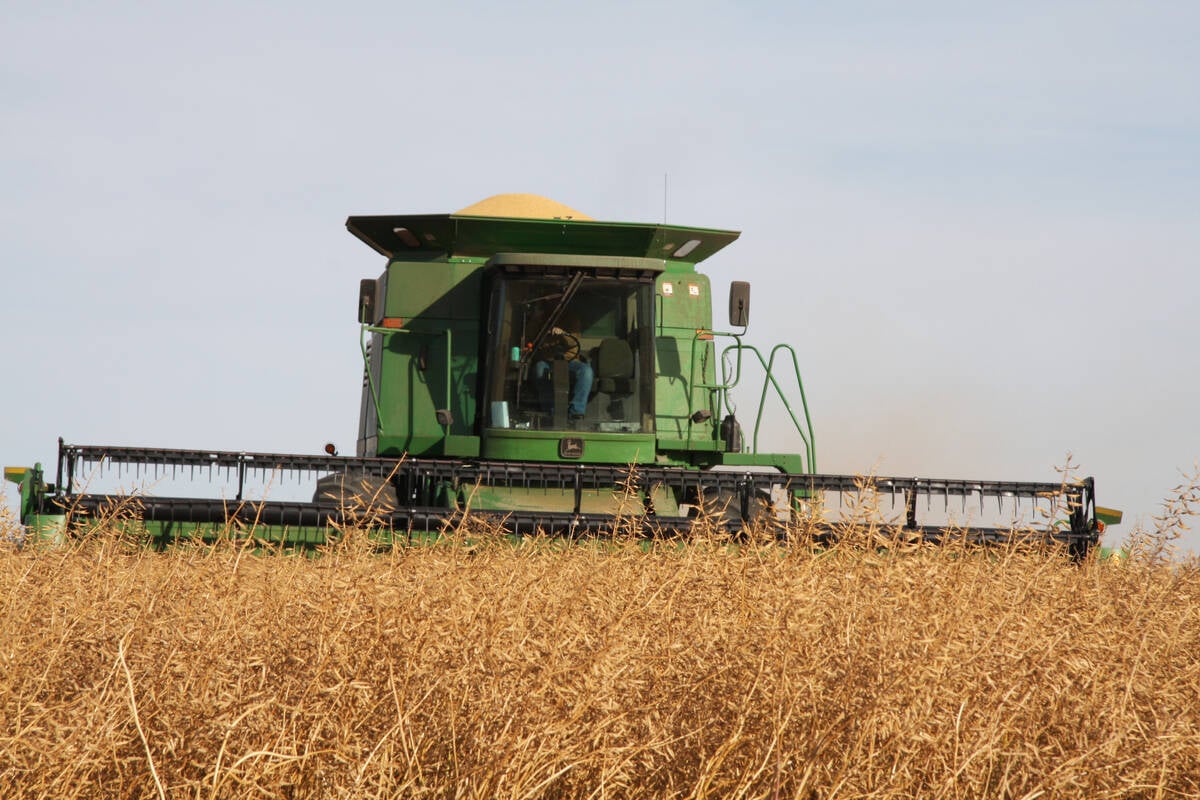
Mustard processor expands in southern Alberta
$30 million expansion for southern Alberta mustard facility adds milling capacity to largest supplier in the world of value-added milled mustard products
Seeding alfalfa on grazing land is worth it, said Karin Schmid, Alberta Beef Producers production and extension lead. Adding alfalfa improves plant biodiversity. It fixes nitrogen and increases soil fertility. Farmers can expect their forage yields to surge and their animals to perform better.
“It’s called the queen of forages for a reason,” she said.
Bloat risk can be reduced by managing the timing of grazing and cattle activity and by watching the stage of plant growth.
Frothy bloat is the most dangerous kind, and alfalfa’s high levels of soluble protein contribute to that problem. The protein digests quickly, and the faster the digestion, the quicker gas builds up in the rumen, causing bloat.
“Then this frothy bloat happens, when gas gets trapped in the liquid or the semi-liquid rumen contents and it forms a foam that prevents cattle from belching out that gas,” said Schmid.
The Beef Cattle Research Council and Schmid have tips to help producers get the full range of alfalfa’s benefit without putting cattle at risk.
*Mix alfalfa with other forages,” Schmid said. “One key recommendation is seeding alfalfa with bloat-safe perennial grasses such as brome. This provides cattle with a wider feed selection than straight alfalfa. Depending on the percentage of alfalfa in the mix, this can reduce the risk of bloating.”
A 60-40 split, grasses to alfalfa, is a popular choice. Bloat-safe legumes are another option.
“Sainfoin and cicer milkvetch are considered bloat-safe because they contain tannins,” Schmid said. “The tannins bind to that soluble protein and slow down that rate of digestion.”
Weather also plays a role in digestion speed. Moist plants tend to digest faster, she noted, so farmers should avoid moving cattle onto new alfalfa pasture when it’s wet. By the same token, waiting until midday or later to rotate the herd can minimize moisture and increase plant carbohydrate concentration to help balance out soluble protein uptake, according to the BCRC.
Much like corn grazing in winter, cattle should not be hungry before being moved, lest they overindulge in the most attractive feedstuff in the new paddock. In winter corn grazing, that worry stems from corn cobs. In this case, cattle may beeline for fresh alfalfa.
If they’re full before the move, they have less chance to get themselves in trouble.
“You really want to make sure they’ve eaten their fill of hay or grass pasture first,” said Schmid. “What you’re trying to (do is) prevent is them overeating or gorging when they’re first exposed to all this lush pasture.”
Supplementing with straw can also add needed roughage to the animal’s gut and waiting to graze until later in the season can limit risk. Experts advise waiting until alfalfa is in full bloom and digestion-slowing fibre levels are higher. The younger the alfalfa, the lower the fibre and higher the bloat risk.
“The risk of bloat is greatly decreased when alfalfa reaches about 30 to 40 per cent bloom,” Schmid said. “Waiting until there’s full bloom will just give you a little bit added protection.”
By the time alfalfa is blooming, there’s also less chance of frost. Cattle shouldn’t graze alfalfa for three days to two weeks following a killing frost, the BCRC noted in a May article. It warned that “frost may increase the incidence of bloat by rupturing plant cell walls, leading to a high initial rate of digestion.”
The best bet is to wait until the stand dries following a frost, said Schmid.
Other tips from the BCRC include frequent monitoring and adjusting grazing plans as needed.
Producers may also want to leave alfalfa grazing to the youngsters in the herd. Yearlings and calves have a smaller rumen capacity, the BCRC said. Because they can’t eat as much at once, their bloat risk can be lower.
That can get complicated when grazing cow-calf pairs, said Schmid. For those, she prefers management strategies that centre around graze timing and strategic management to avoid moving hungry cows.
The BCRC also pointed to Alfasure. When mixed with water, that additive is intended to prevent buildup of foam leading to frothy bloat. But getting the product to the animal can be tricky, said Schmid.
“If they’re drinking out of an off-site watering system with a trough, that’s pretty much the only way you would be able to administer it.”
Veterinarians can help producers decide on an appropriate product or method if bloat is a concern, she said.
“I would just have a conversation with their vets about what their options might be and, of course, those associated costs.”




